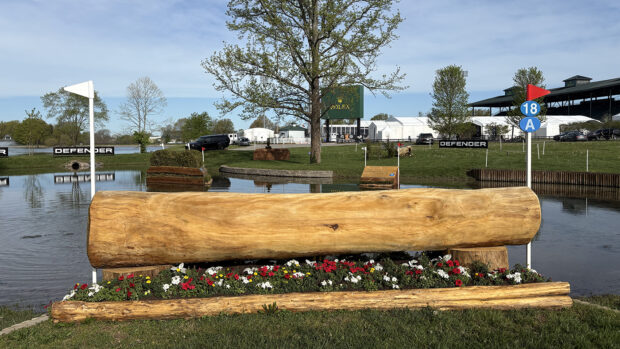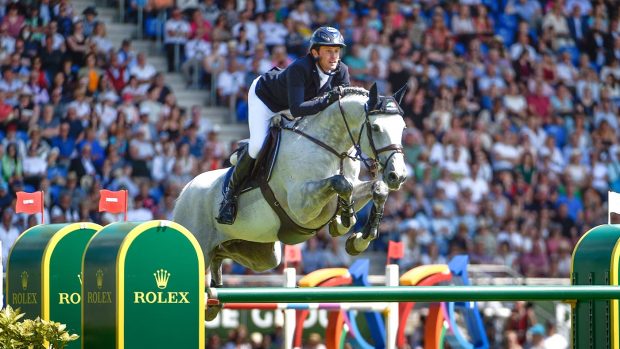Find out which fences on the Tokyo Olympics cross-country course are likely to determine who wins the Olympic eventing medals – and what Tokyo course-designer Derek di Grazia says about them.
Tokyo Olympic cross-country course – fence 4 and 5abc: Lakehouse and The Sanctuary
What’s the challenge? On the direct route, riders jump the lighthouse at fence four, then continue down the slope over the log at 5ab and on over the fish in the water (5c). The long route is off to the left and involves a lighthouse (four), a log (5a) and then two birds on a right-hand curve in the water (5b and 5c). This is the first combination on the Tokyo Olympics cross-country course.
Fence 4 direct route
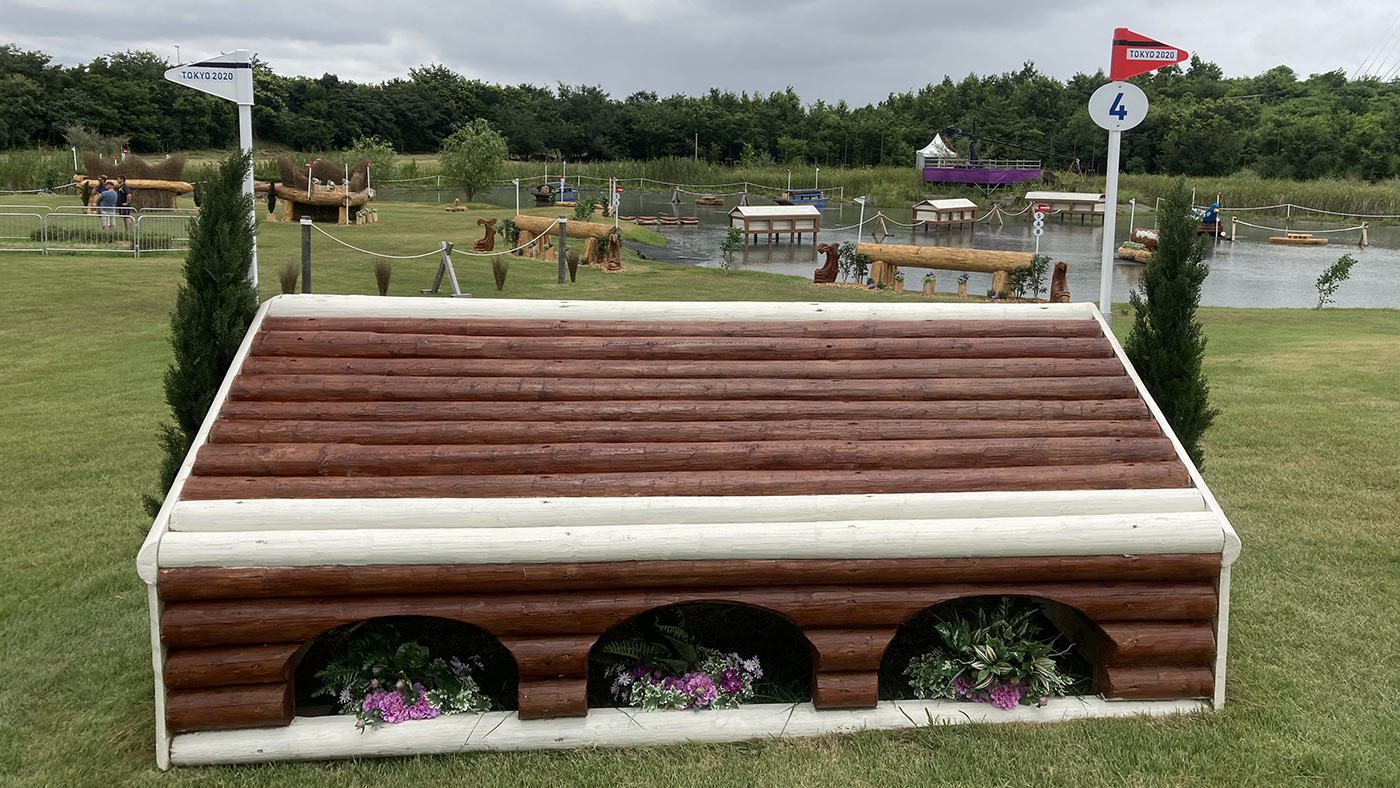
Fence 5ab direct route

Fence 5c direct route
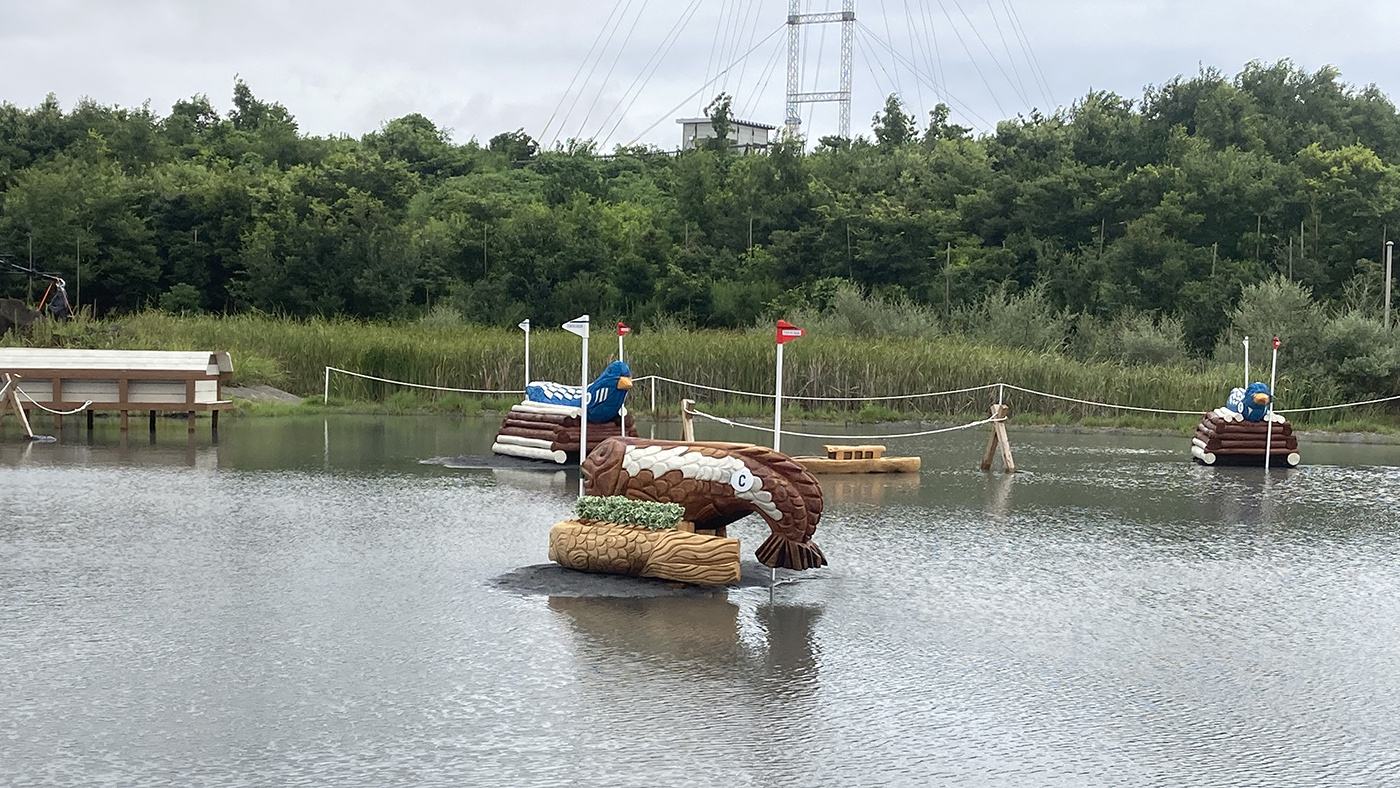
Fence 4 alternative route

Fence 5a alternative route

Fence 5bc alternative route
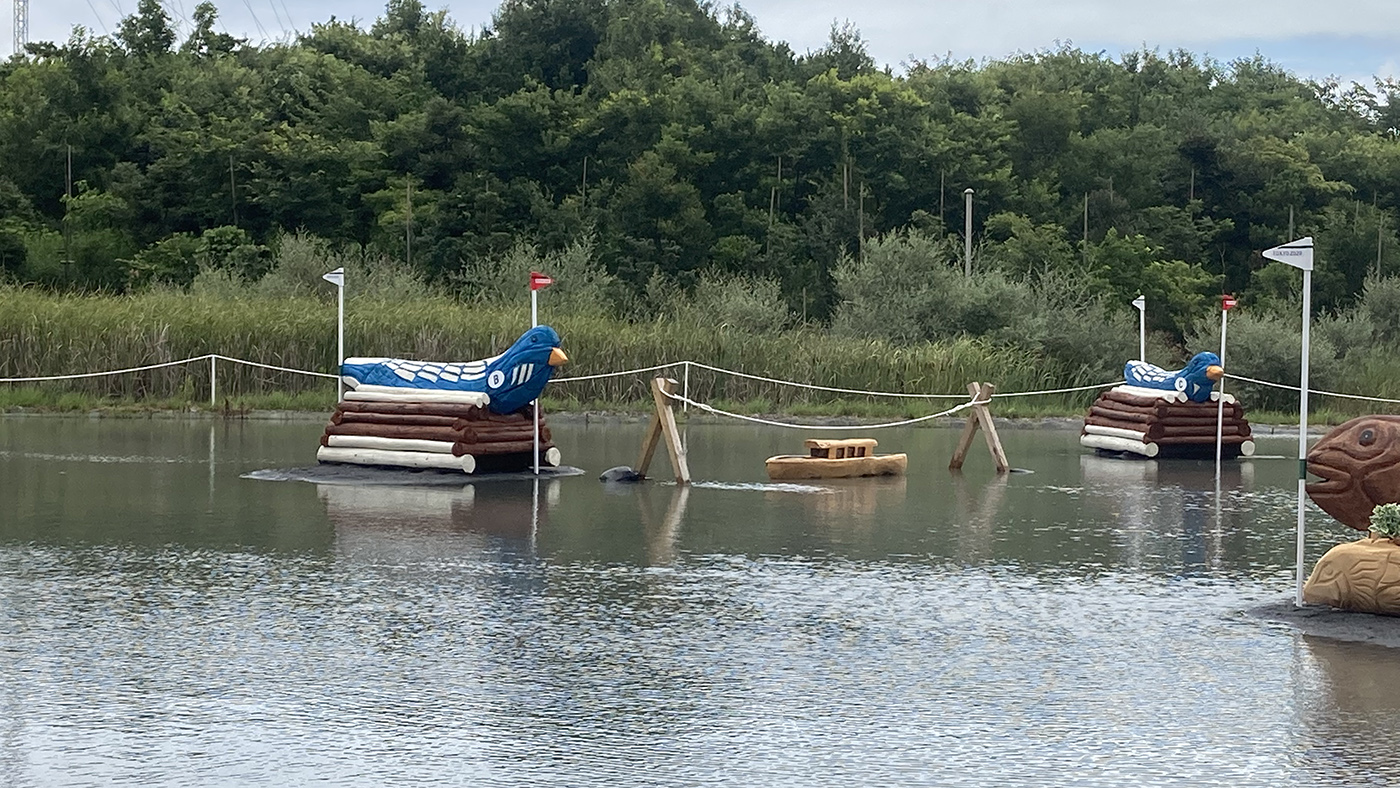
Can riders change their minds mid-combination? The numbering here means that riders can divert to the alternative 5c after the direct log in (5ab) if they wish.
Derek says: “The drop from the log isn’t huge and horses will land on dry land, but it’s enough at this point on the course. It’s probably five or six strides from fence four to 5ab on the direct route – we may even see seven strides here – and four to the fish in the water, though we could see five strides here.”
Fences 8abcd and 9abc: Lake Sea Forest
What’s the challenge? The direct route is all on a right-hand turn. It involves jumping an angled hanging log into the water (8ab), a boat in the water (8cd), a step up out of the water (9ab) and a left-handed corner (9c). The long route is an outer line and riders tackle a log on the land (8a), a further log into the water (8bc), a boat (8d), a step up out of the water (9a) and a right-handed corner (9bc).
Fence 8ab direct route

Fence 8cd direct route (fence nearest to camera)

Fence 9ab direct route is a step up out of water (not pictured)
Fence 9c direct route

Fence 8a alternative

Fence 8bc alternative
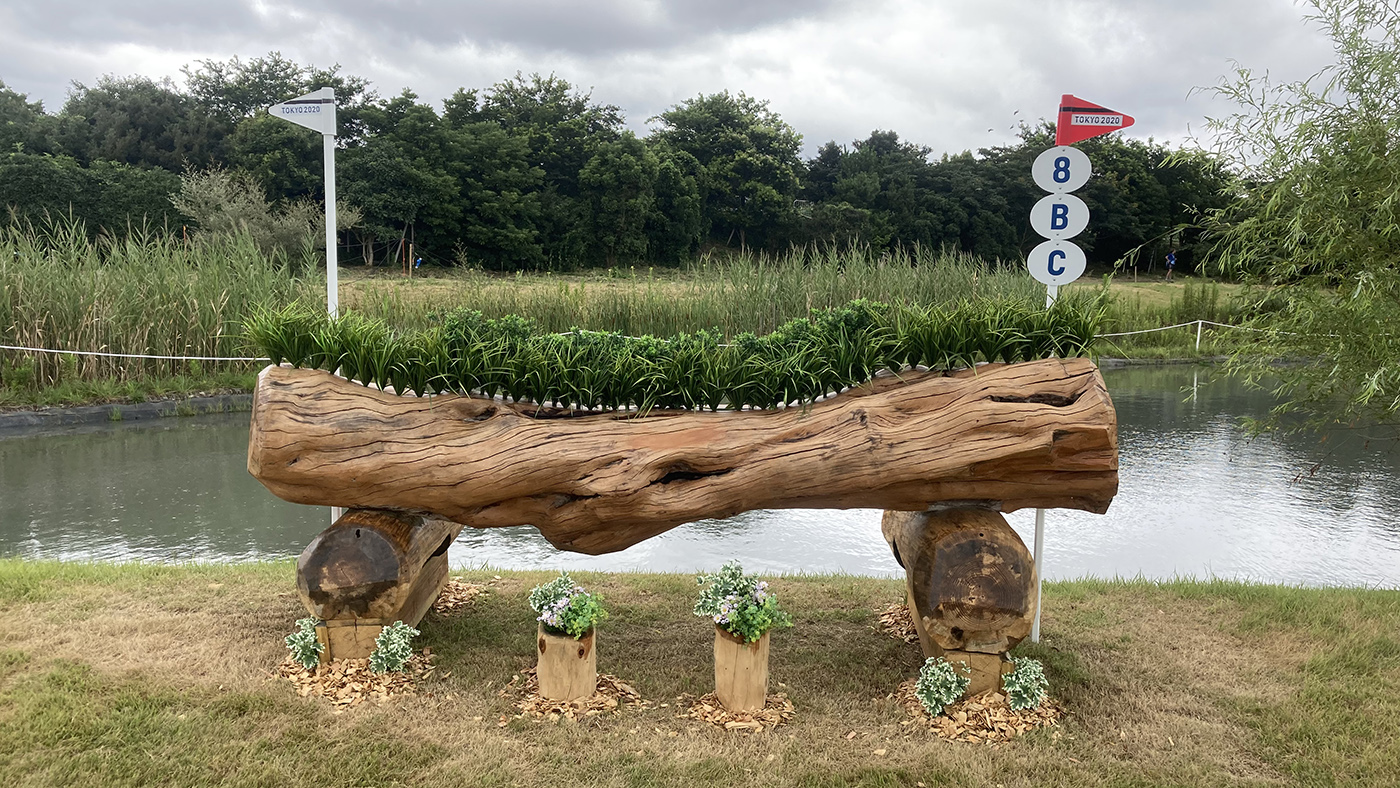
Fence 8d alternative (far side)

Fence 9a alternative route is a step up out of water (not pictured)
Fence 9bc alternative route
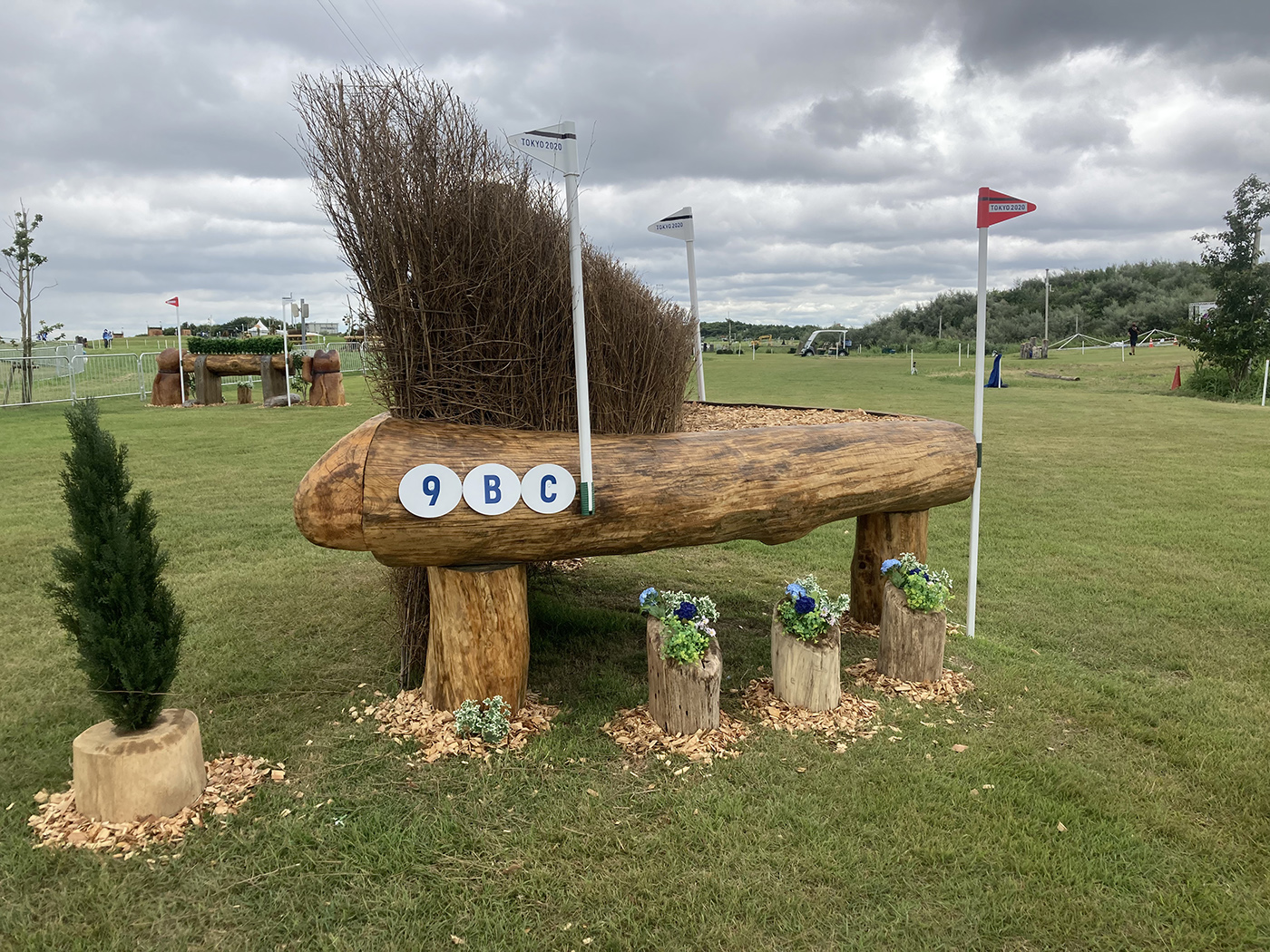
Can riders change their minds mid-combination? No. The numbering and roping means that you are committed to one line or the other.
Derek says: “When you’re going long here, you’re definitely going long. It makes a big difference to be able to use numbering to create different lines in this way.”
Tokyo Olympic cross-country course – fence 11abc: Dragon Fly Pond
What’s the challenge? The fastest route involves taking on a big, narrow skinny (11ab), then down into the water on a right-hand curve and on over another skinny (11c). The slower option, on the outer line to the left of the straight route, involves a skinny (11a), a house (11b) and then a skinny in the water (11c).
Fence 11ab direct route

Fence 11a alternative route
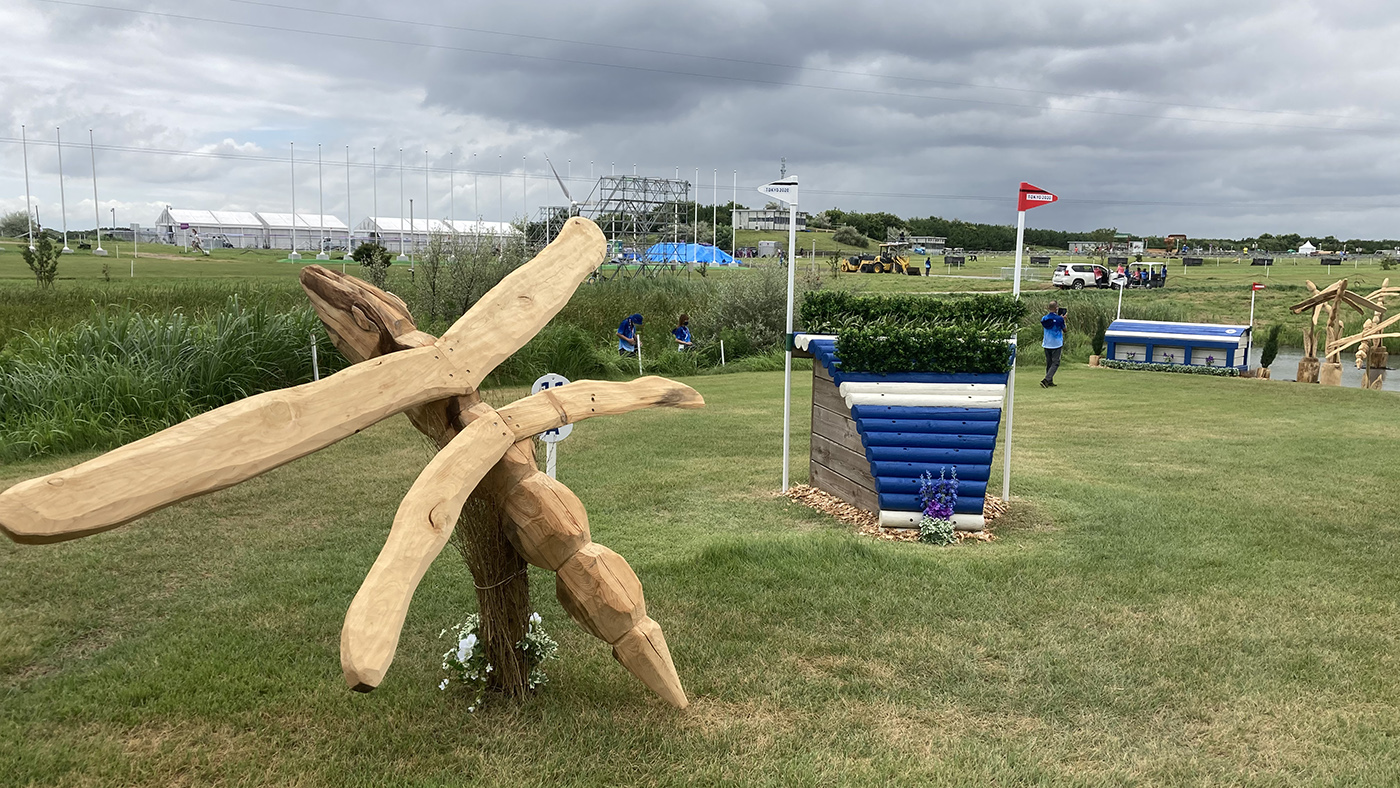
Fence 11b alternative route
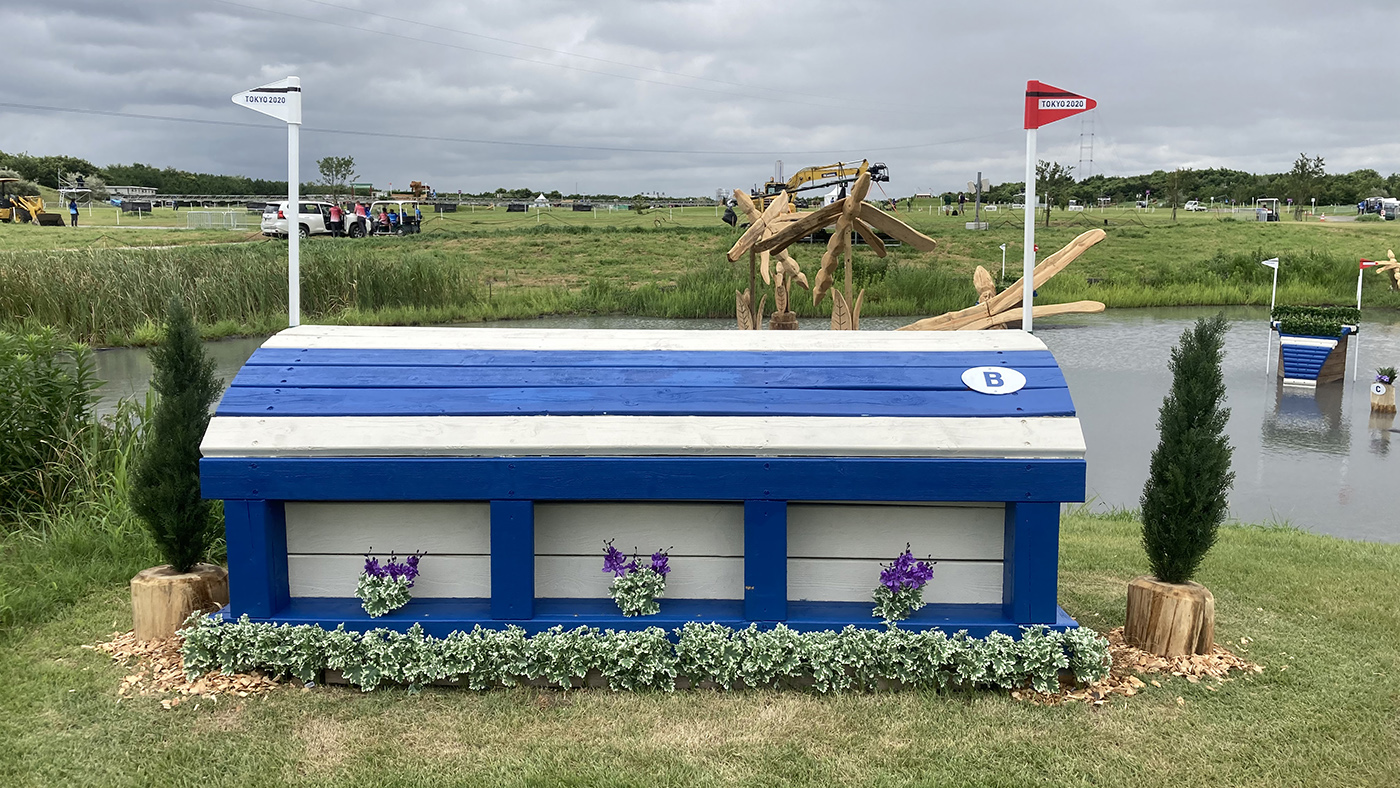
Fence 11c (two options)

Can riders change their minds mid-combination? Yes. You can jump the direct route 11ab and then the slower 11c.
Derek says: “The direct skinny in is a big jump, with quite a big drop, so it’s important to offer an ‘out’ if riders have a problem on the way in, hence letting riders change their minds before element c. I think most riders will have a crack at the direct route here.”
Fence 14abcd: Lone Tree Moguls
What’s the challenge? The direct route is over a rail oxer (14ab) and on to a left-handed corner (14cd) on a right-hand curve. The slow way is an outer line over a brush-topped box (14a), a left-handed corner (14bc) and out over a skinny brush box (14d). The activation of MIMclips for 11 penalties could come into play here on the Tokyo Olympics cross-country course.
Fence 14ab direct route
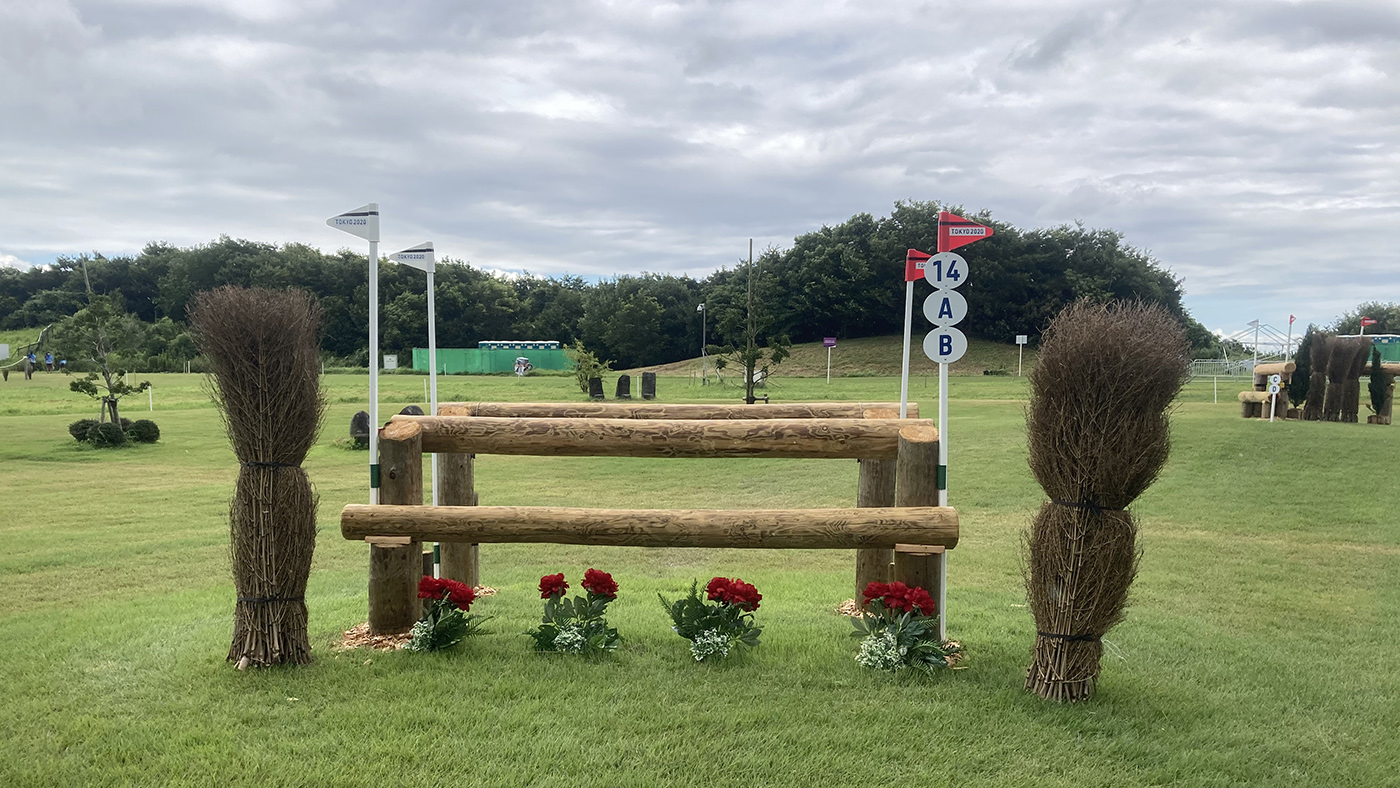
Fence 14cd direct route
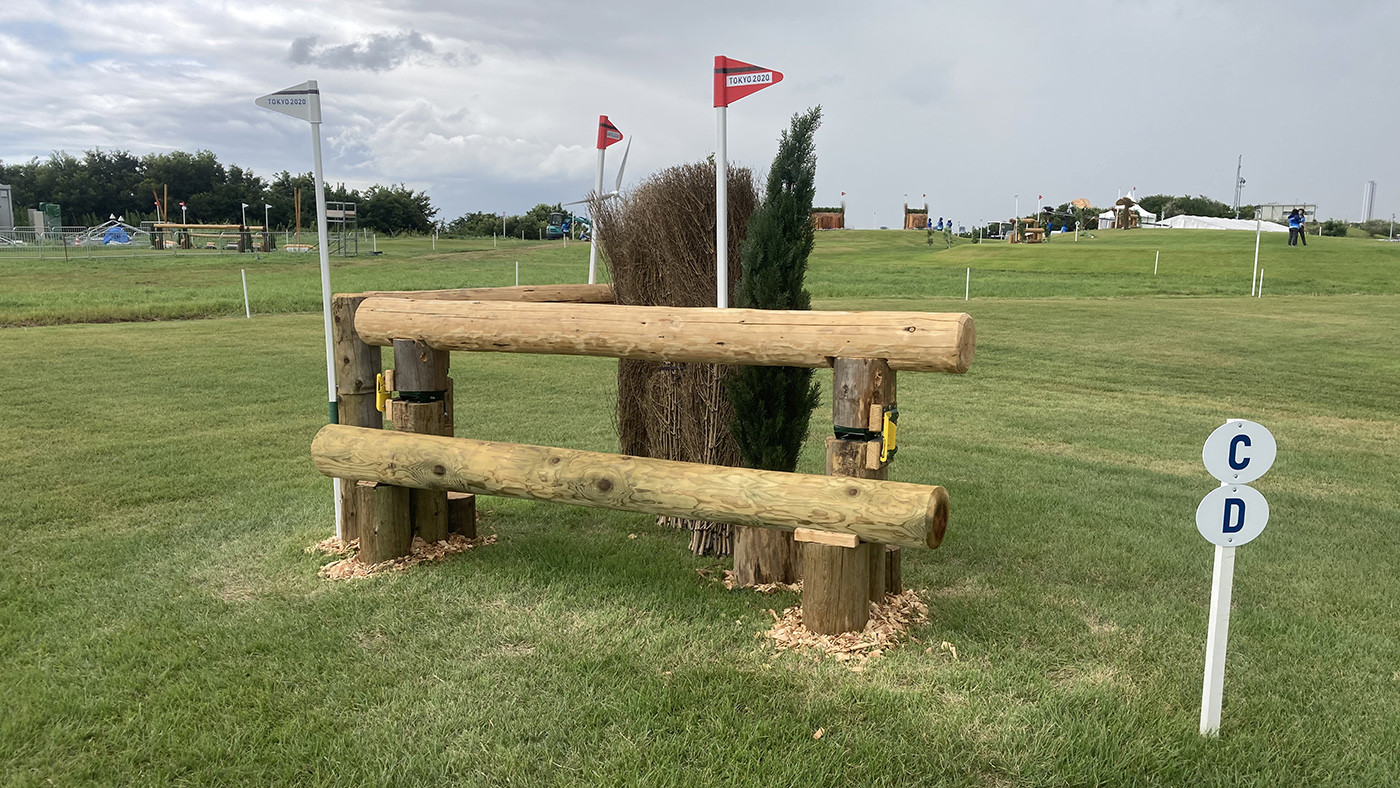
Fence 14a alternative route

Fence 14bc alternative route
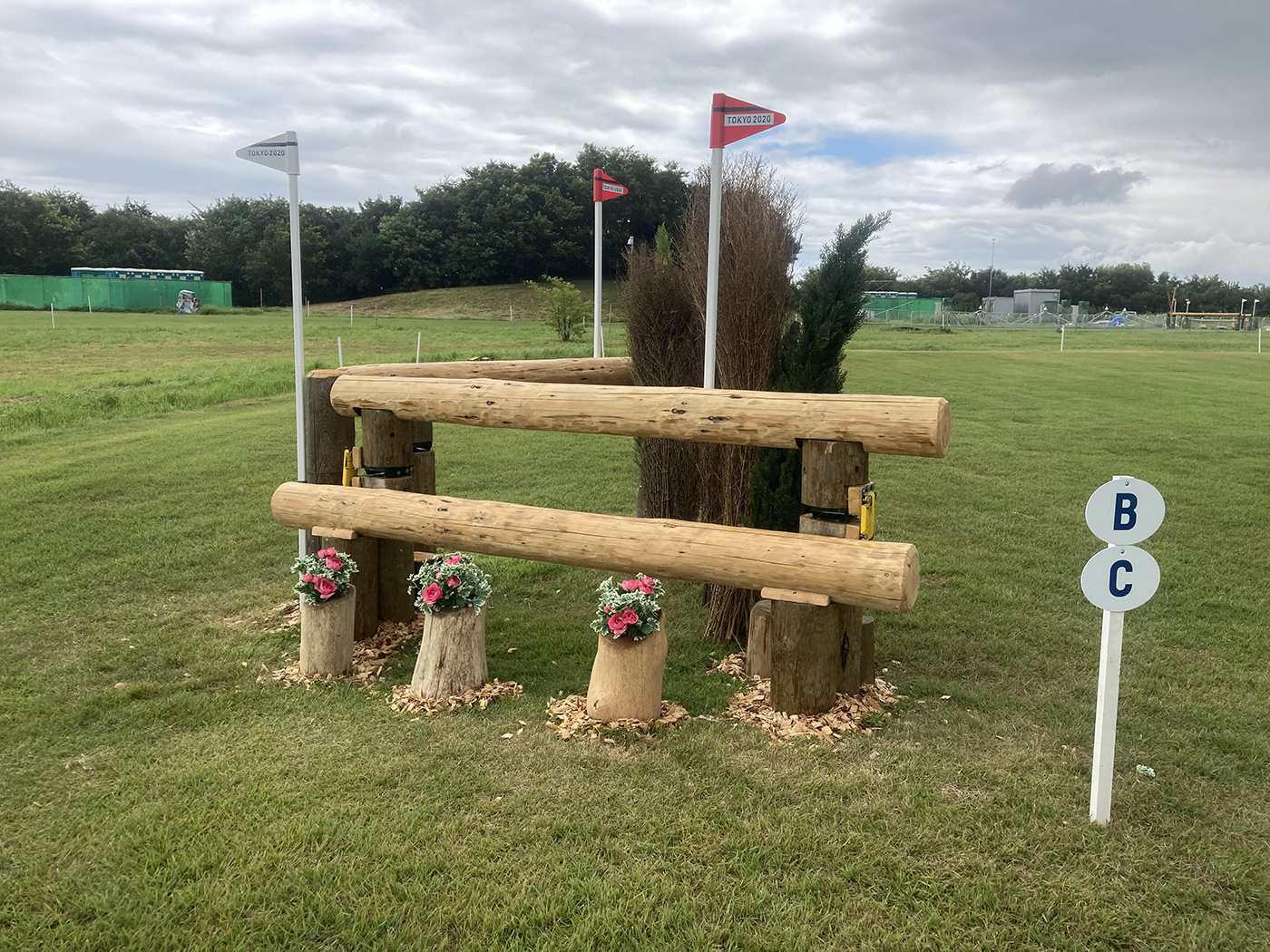
Fence 14d alternative route
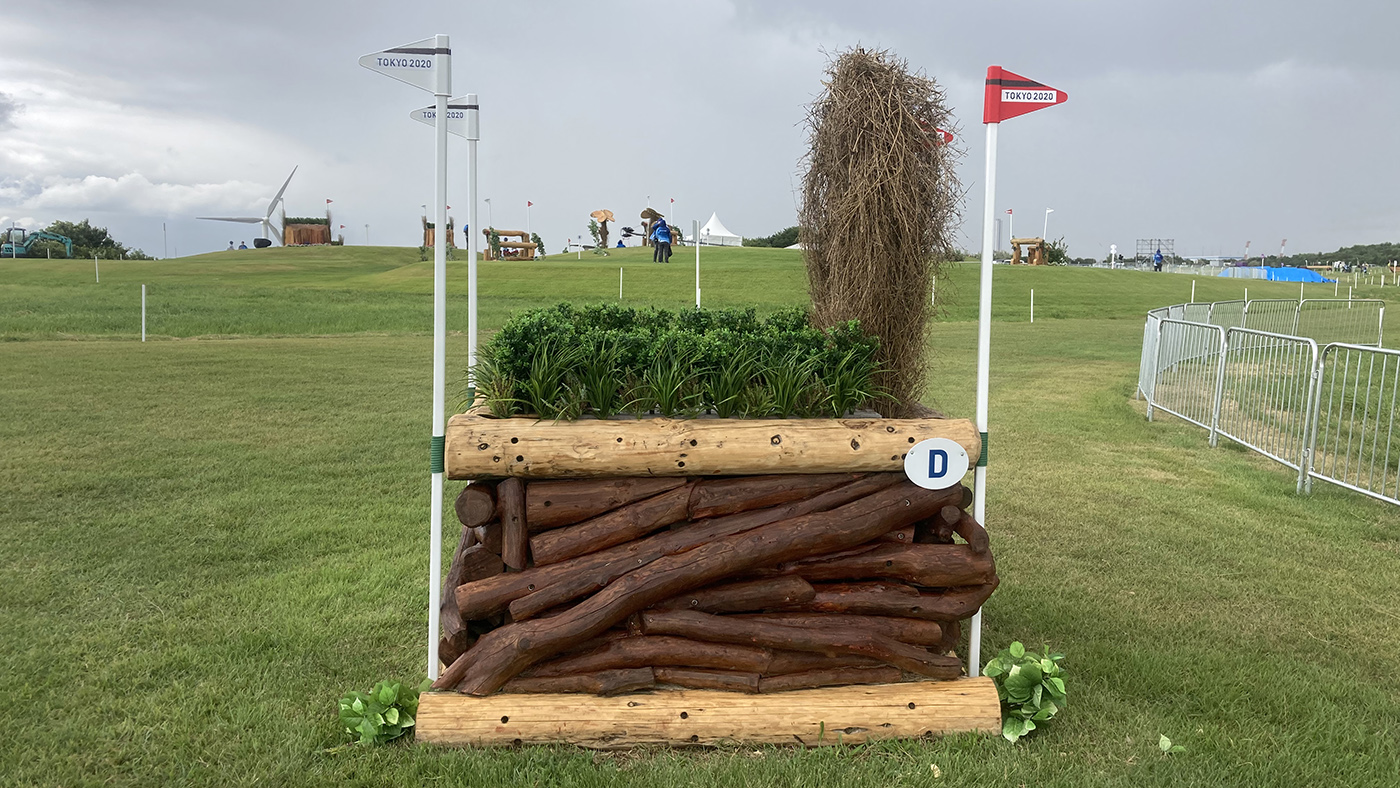
Can riders change their minds mid-combination? No. If you jump the rail oxer (14ab), you have to jump the direct route corner out to stay penalty-free.
Derek says: “The oxer on the direct route is maximum size and I think will ride quite big. You could say it’s five or six strides to the corner… or it could be more. It will depend how the horse lands and on the individual horse. The direct route will come up quicker and riders will have to have the horse on his line and very straight to jump the corner. The alternative gives more room, taking out the intensity and giving time to prepare and go from one jump to the next. This fence is at 4min 30sec for those aiming for the time, so a little over halfway round the track.”
Fence 16abc: Mount Fuji Drop
What’s the challenge? Everyone jumps the big drop (16a). Then there’s a choice of a tighter inner line on the left-hand curve over a shoulder brush (16b) and right-handed corner (16c) or a longer outer line over the same style of fences.
Fence 16a

Fence 16a back view

Fence 16b direct route
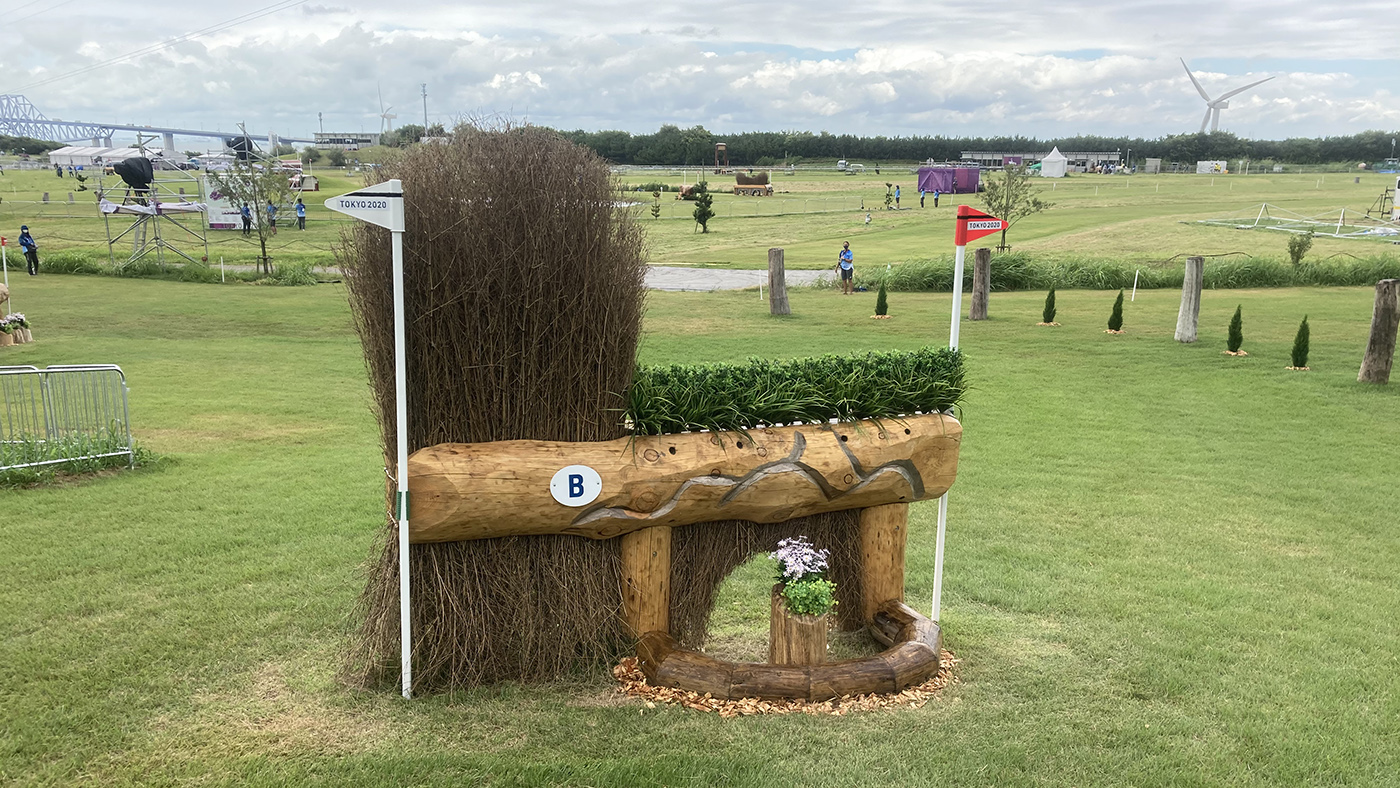
Fence 16c direct route

Fence 16b alternative route
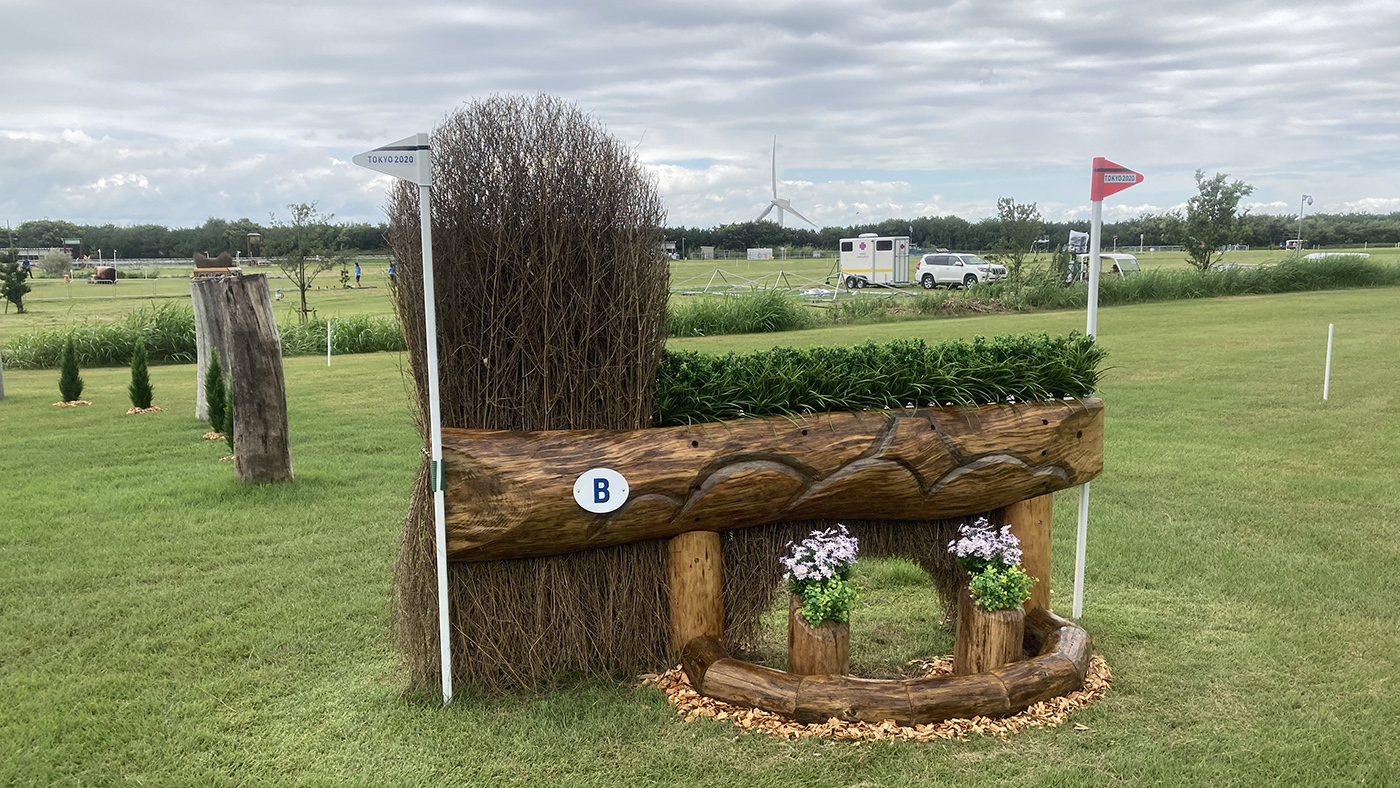
Fence 16c alternative

Can riders change their minds mid-combination? Yes. It would be slightly awkward, but if a rider had a bad jump over 16b on the fast route, they could pull out of the direct line and take the alternative corner at 16c.
Derek says: “Momentum is going to carry horses down the hill so riders will have to make sure they have control and accuracy to jump the corner. The longer route still requires the ability to turn and hold a line to the corner but it’s not quite as intense.”
Fence 18abcd: Bumps and Stumps
What’s the challenge? The speedy route is a rail (18a), down a slope to a ditch (18b) and up to a narrow stump (18cd). The long route, again on an outer line, is over a skinny rail (18a), another set of rails (18b), and two stumps (18c and 18d). Again, MIMclips could be activated for 11 penalties here.
Fence 18a direct route
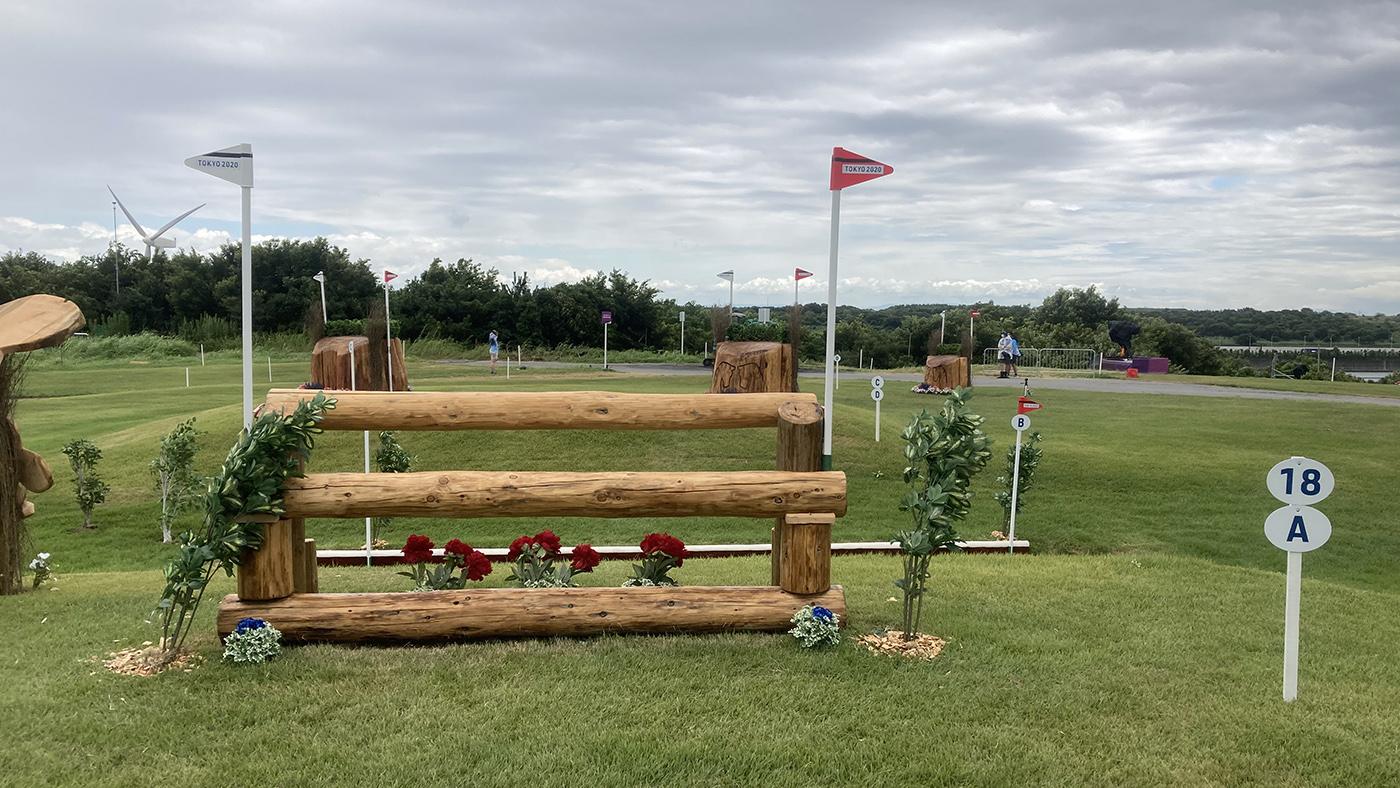
Fence 18b direct route
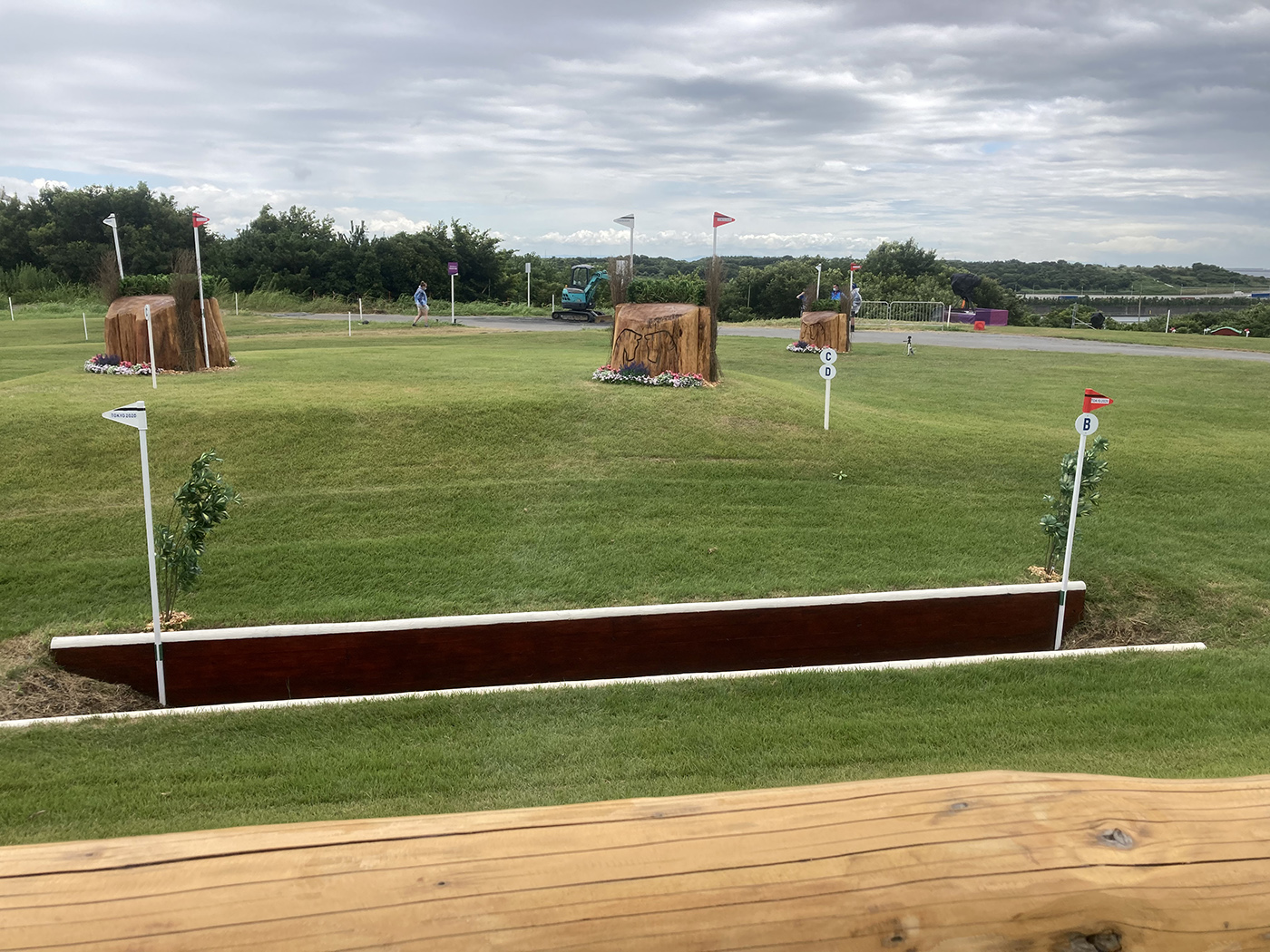
Fence 18cd direct route

Fence 18a alternative route

Fence 18b alternative route

Fence 18c alternative route

Fence 18d alternative route

Can riders change their minds mid-combination? Technically the numbering allows for going from the ditch (18b) to the alternative stumps out (18c and d) but the line is such that it would be difficult to do without incurring penalties for crossing your tracks.
Derek says: “This fence comes at 6min 30sec. Both routes will be used and I’d expect riders to know both options, with some deciding which way to go depending on how the time is going for them and whether they can afford to play it safe. It will also depend on whether your horse is good at this type of fence. The straight way will be a little quicker and has one less jumping effort.”
Fence 20abcd: Mount Fuji Water
What’s the challenge? The direct route is a house on a mound (20ab), then a right-handed corner in the water (20c) and a skinny bear out (20d). The slower option is a narrower house on a smaller mound (20a), across the water to a bear (20bc) and then a right-hand turn to a left-handed corner (20d). This is the penultimate combination on the Tokyo Olympics cross-country course – the last is a double of bullet trains at fence 22ab.
Fence 20ab direct route
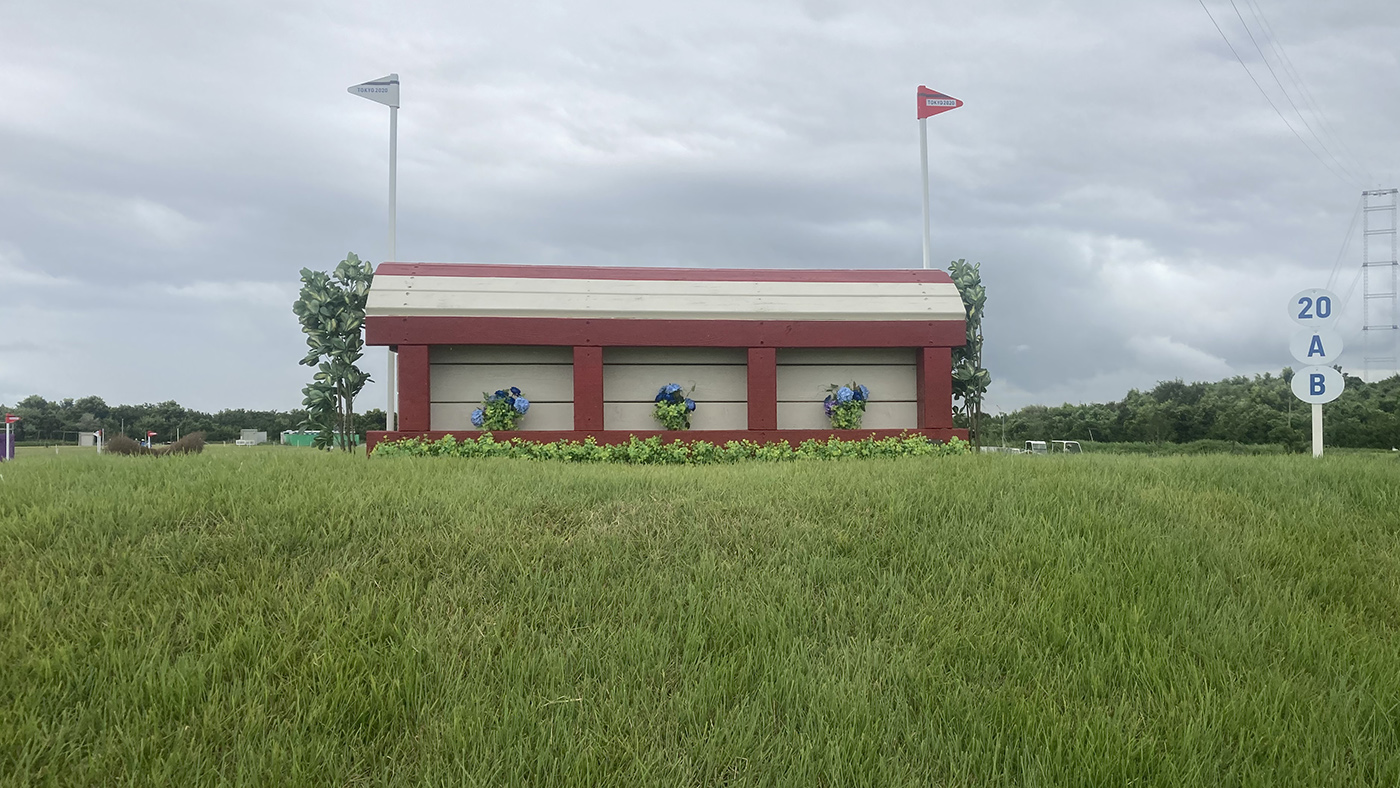
View over fence 20ab to fence 20c direct route
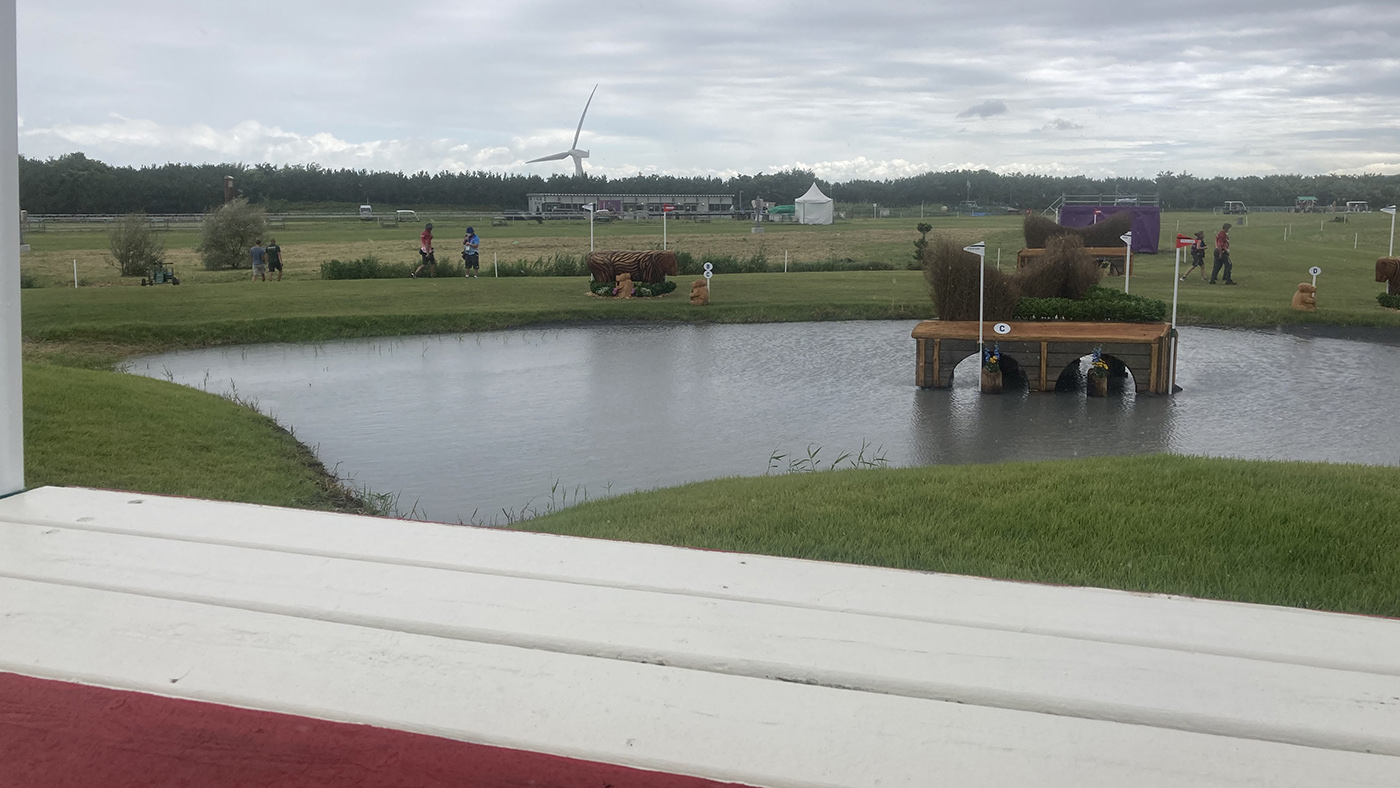
Fence 20c direct route

Fence 20d direct route

Fence 20a alternative route

Fence 20bc alternative route

Fence 20d alternative route
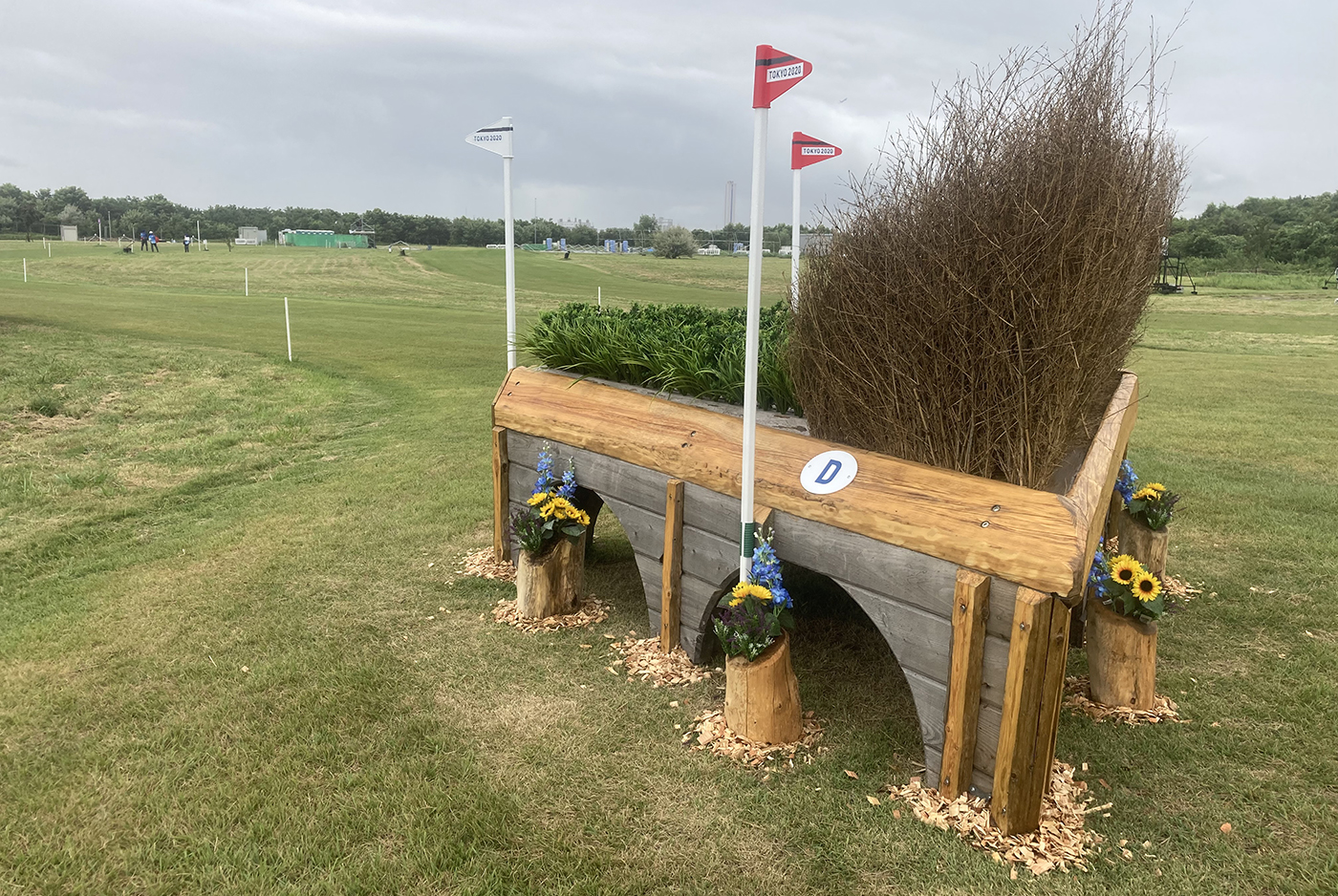
Can riders change their minds mid-combination? Once you jump the direct house (20ab), you are committed to the direct corner (20c). Technically a rider could divert to the alternative 20d, but with not much distance between fences, it could be difficult to pull off without being penalised for presenting to the direct d element.
Derek says: “It’s a steep rise to the house on the direct route, then probably four strides to the corner and two to the bear – but again, we can’t be sure, we’ll see what happens on the day. The base of the mound is about 40sec from the finish for those on target to make the time. Riders can’t relax here, near the end of the course – they still have fences to jump and must ride all the way to the finish.”
You might also be interested in:

Walk the Tokyo Olympics cross-country course: photos of every fence

‘Time will be quite a factor’: Tokyo Olympics cross-country course-designer analyses the challenge ahead

Five things you need to know about the Tokyo Olympics cross-country course

How to watch Olympic eventing live

Subscribe to Horse & Hound magazine today – and enjoy unlimited website access all year round
Horse & Hound magazine, out every Thursday, is packed with all the latest news and reports, as well as interviews, specials, nostalgia, vet and training advice. Find how you can enjoy the magazine delivered to your door every week, plus options to upgrade your subscription to access our online service that brings you breaking news and reports as well as other benefits.



